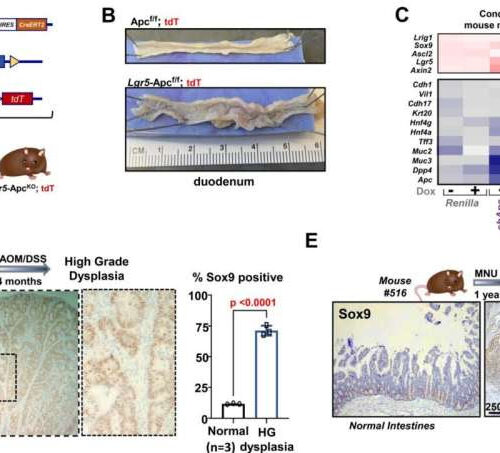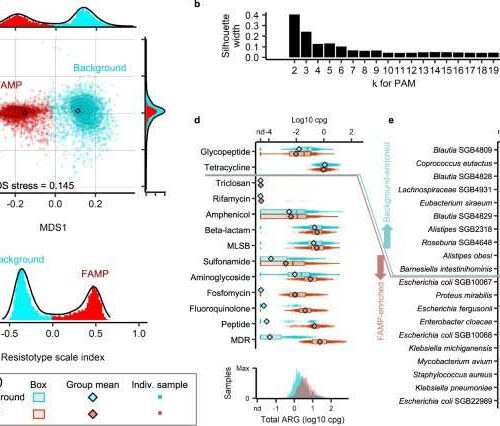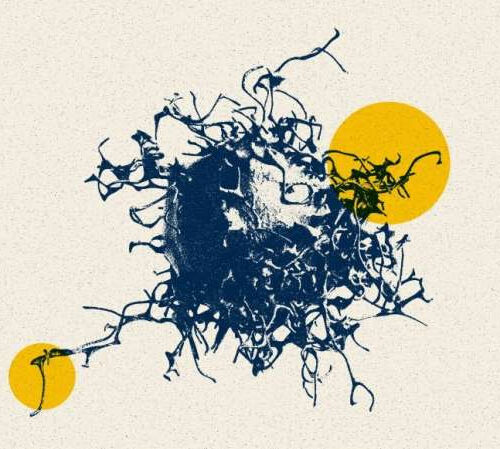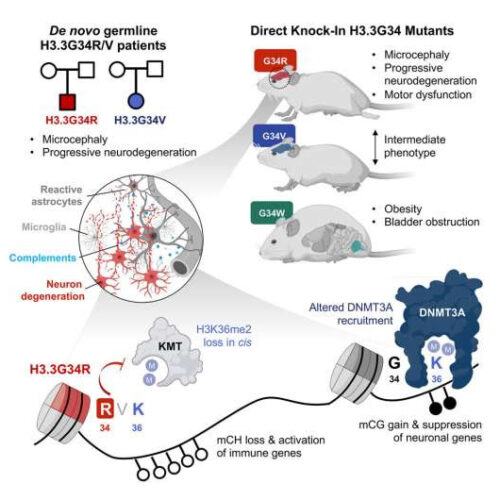OHIO UNIVERSITY A team of researchers from Ohio University’s Heritage College of Osteopathic Medicine recently discovered a novel role of human-CIDEC gene in improving metabolic dysfunction and cardiovascular health. The study, “Endothelial-Specific Expression of CIDEC Improves High-Fat Diet–Induced Vascular and Metabolic Dysfunction,” published in Diabetes focuses on vascular function and its association with metabolic diseases like insulin...
Category: <span>Genetics</span>
New breast cancer susceptibility gene candidate identified
by Justin Jackson , Medical Xpress Credit: Unsplash/CC0 Public Domain A paper published in the American Journal of Human Genetics proposes ATRIP gene variants as a breast cancer susceptibility gene candidate based on a study of women without any of the known breast cancer-associated gene variants. The team of Canadian and Polish researchers led by the University of Toronto...
A 20-year study may upend long-held theory about chromosomes and cancer
by Johns Hopkins University School of Medicine Illustration of the link between short telomeres and squamous cancer. Credit: Jennifer Fairman Johns Hopkins Medicine scientists say their 20-year study of more than 200 people with premature aging syndromes caused by abnormally short telomeres, or shortened repetitive DNA sequences at the ends of chromosomes, may upend long-held scientific...
New nanoparticles can perform gene-editing in the lungs
MASSACHUSETTS INSTITUTE OF TECHNOLOGY CAMBRIDGE, MA — Engineers at MIT and the University of Massachusetts Medical School have designed a new type of nanoparticle that can be administered to the lungs, where it can deliver messenger RNA encoding useful proteins. With further development, these particles could offer an inhalable treatment for cystic fibrosis and other...
Sox9 protein enables molecular ‘time travel’ that can lead to colorectal cancer
by Dana-Farber Cancer Institute Elevated expression of Sox9 and reduced expression of differentiation genes in murine models of intestinal neoplasia. A. Diagram showing breeding scheme to achieve Lgr5-Apcf/f-tdT mice for conditional Apc inactivation. B. Representative images showing gross anatomy of duodenal intestines from indicated mice. C. Heat map of intestinal stem cell (red) and differentiation...
NIH scientists discover an autoinflammatory disease caused by mutations in the LYN gene
Reviewed by Emily Henderson, B.Sc. Mar 28 2023 Scientists have identified an autoinflammatory disease caused by mutations in the LYN gene, an important regulator of immune responses in health and disease. Named Lyn kinase-associated vasculopathy and liver fibrosis (LAVLI), the identification sheds light on how genes linked to certain illnesses can potentially be targets for treatment by repurposing...
New statement suggests next steps to interpret incidentally identified gene variants related to heart disease
Reviewed by Emily Henderson, B.Sc. Mar 27 2023 Increasing use of genetic testing means people may discover they have a gene variant associated with some types of cardiovascular disease (CVD). A new scientific statement, published today in the American Heart Association journal Circulation: Genomic and Precision Medicine, aims to help individuals and health care professionals...
Human body is a breeding ground for antimicrobial resistance genes, shows new study
by Earlham Institute Two distinct clusters apparent in the global landscape of adult gut resistome profiles. a NMDS projection of Bray–Curtis dissimilarities among the log-transformed ARG family profiles (cpg) in adult gut metagenomes (contours estimate sample densities). Samples were colored by cluster assignment (PAM, Bray-Curtis clustering, k=2). b Average silhouette width of PAM Bray-Curtis clusters as...
Artificial intelligence predicts genetics of cancerous brain tumors in under 90 seconds
by Noah Fromson, University of Michigan Credit: Jacob Dwyer, Justine Ross, Michigan Medicine Using artificial intelligence, researchers have discovered how to screen for genetic mutations in cancerous brain tumors in under 90 seconds—and possibly streamline the diagnosis and treatment of gliomas, a study suggests. A team of neurosurgeons and engineers at Michigan Medicine, in collaboration...
Too much pruning: A new study sheds light on how neurodegeneration occurs in the brain
by McGill University Health Centre Credit: Cell (2023). DOI: 10.1016/j.cell.2023.02.023 Just like pruning a tree helps promote proper growth, the brain uses synaptic pruning to get rid of unnecessary connections between its cells. However, when this normal process, which occurs between early childhood and adulthood, doesn’t stop properly, the brain loses too many connections, including important ones....




